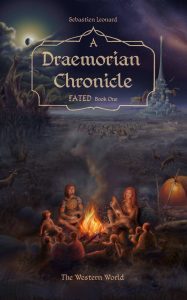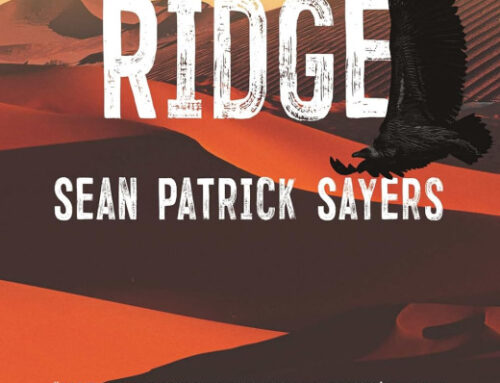 In the beginning, there was a tribe of nomads that took only what they needed and lived as one with the world. As time grew, the tribe became the tribes, and the tribes’ three wisest argued the nature of things: one argued light was the true creator, one argued dark, and one argued both were unreasonable and would only believe in what could be proved. They split the tribes into factions and distanced each other to far corners, leaving the undecided to rot in the fields.
In the beginning, there was a tribe of nomads that took only what they needed and lived as one with the world. As time grew, the tribe became the tribes, and the tribes’ three wisest argued the nature of things: one argued light was the true creator, one argued dark, and one argued both were unreasonable and would only believe in what could be proved. They split the tribes into factions and distanced each other to far corners, leaving the undecided to rot in the fields.
To each group of believers, something new emerged: light earned the dominance of angels, darkness that of demons, and to the third, a great artificially-intelligent world known as Mechanus. A representative from Mechanus took throne over all, and decided that one day, in the case of unfaltering war, there would be judgment of all ideals, once and for all forcing the two kings to do battle in settlement. From here, they are left to their own devices for many years, unaware of the developing world they live in.
This sad, decaying world of progress’s history and future is compiled in the stories of a minstrel, hereby titled A Draemorian Chronicle: The Western World, Volume 1 of the Fated series, written by Sebastien Leonard.
The combination of Native American, Judeo-Christian, mechanized Steampunk, and Medieval high fantasy elements works to some degree, but lacks a thorough explanation of how much of the world works beyond a dismissive claim made by even the most informative characters that it simply does.
Most egregious is the use of first-person narrative to deliver each story as told by Sorrownote the minstrel and her many interviewees: the book often seems to skip between mentalities as each narrator waxes lyrical about the many aspects of their culture and mannerisms before suddenly switching into vocabulary, manners of speaking, and even knowledge and cultural habits that they would either have no knowledge of or had previously addressed as inappropriate. One early example is the mention of the Blood Plains Tribes having no concept of personal names, before addressing a character a page later with a specific name, no explanation given.
Otherwise the book is quite intriguing, with fleeting characters mixing with powers beyond their control in a well-explored world. The writing is very descriptive, attempting to stick to characteristic tones and hold the reader in a deep level of immersion as much as possible while keeping the story going. The book succeeds in seeming as if a collection of originally-vocalized tales of a long-lived minstrel, although at times forgets itself.
The book is very well edited in general and is quite beautifully laid out. The cover in particular, illustrated by Derek Sproule, is very soulful and full of detail that marks the publication as a professional and involved work.
It’s clear that a great deal of passion and labor went into the book from even a glance, and would be a gorgeous item to have in print. Despite its flaws, it’s obvious that the book will appeal to many fantasy aficionados who are happy to connect their own dots and enjoy the book for what it is: a rich setting with many tales in it to tell.
Leonard intends to expand the Fated series into a five-book anthology that will encompass a wider view of the world, as well as film and video games adaptations that are expected to bring viewers and players into dramatic and encompassing versions of events described in the books.
Review Overview
Design
Content
Editing
Get an Editorial Review | Get Amazon Sales & Reviews | Get Edited | Get Beta Readers | Enter the SPR Book Awards | Other Marketing Services























Hello! I’d like to make my readers aware of a couple facts pertaining to the series which might shed light on a few of these concerns. As with every great series, there is always going to be some intended holes within the plot to perpetuate curiosity and to prevent over-informing the reader on aspects which will affect future novels.
I am delighted to inform you that Book 2: The Eastern World is underway and is planned for released Mid-September to Early-October. In the second book, we witness the world shaping of Mechanus which has reduced the east portion of the continent reduced to a wasteland whilst plowing over entire mountains in search of its soul.
Book 2 is much more technical as it enters the Mechanical/Steampunk realm and focuses on concepts of 10th dimension quantum mechanics with a twist of sci-fi. It is in this book where you will find further explanation of why things are the way they are… to an extent. I’ll leave that part to the reader to find out why.
As for the waxing and conflicting content, I figured I would attempt to make the atmosphere of the narratives a little more in tune with its time. The stories are told in a campfire setting while still providing dialogue in a present-moment format. It can be a little confusing, but think of watching a movie with ongoing narrative in past tense while the characters are actively talking to each other in present tense.
I realize some parts may be viewed as inappropriate, such as the jump to using names which was dismissed by a Stag’s Horn. The Stag’s Horn were always viewed as a leader cast, although they are rarely respected as such. The initial dismissal among the Elysicans was as such, proclaimed by the Stag’s Horn. Immediately after the scouting into Dornar we see a dramatic shift among the natives in perspectives. They begin accepting gifts from even Mechanus, which also uses individual names, and aid from Elysicans to repair their land. In fact, I hope the reader pieces together that Kytara is one of the sole survivors of their excursion, experiencing immediate traumatic stress and becomes a leader of her tribe, eventually taking on her name. I probably could have made the culture shift more pronounced, but some things I figure to leave to the sense making of the reader.
As for the knowledge basis, I am sure that those who present their knowledge are well-informed. Introducing the Blood Plains Tribe is one of the leaders of the Bear’s Paw. As with Australian native knowledge and history, tribe leaders are devoted to providing wisdom to their predecessors through time. With Dornar we follow Moranda, a witch who is well over a century old and lived through most of the ordeals Dornar had brought forth, even though their history had been severed at some time during the Civil War. I never made clear how she could have attained such knowledge, but yet again, I left it to the reader’s sensing. In my mind I like to think of the few that may have escaped or even walked among the rubble. Take for instance the druids of England and Ireland. During roman occupation, most of their history was burned save for artifacts. In the Civil War, demons turned on each other but much was left standing in the rubble. There are plenty of opportunities for history to pass. Lastly we have Elysica which has been monitored from beyond time in heaven up until the narrators became part of the world.
Despite the flaws, albeit intentional, I hope you still find my stories intriguing. There are still plenty of loops and twists that are completely unforeseeable from the perspective of the first book. As for the next book, we’re about to drop our heroes into a world of technical wonder and desolation!